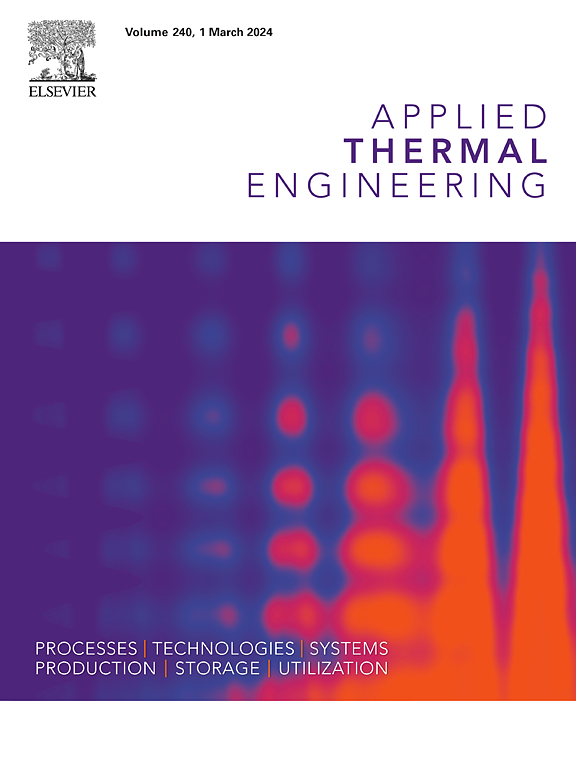The effect of micro-combustor material on premixed Hydrogen/air flame dynamics
IF 6.9
2区 工程技术
Q2 ENERGY & FUELS
引用次数: 0
Abstract
The focus of this work is the numerical study the effect of micro-combustor material on the flame dynamics in a wavy micro-channel, using premixed of Hydrogen/Air mixture, with an equivalence ratio of =1.0. This work extends other works in the literature which consider a linear or hyperbolic temperature profiles along the wall (or adiabatic conditions at the wall) by using a pseudo-stationary conjugated heat transfer approach to account for the effect of the type of material of the micro-combustion chamber on the flame dynamics. We examine five different groups of materials, ceramics (low and high-temperature co-fired ceramics), metals (low carbon stainless steel), amorphous materials (fused silica glass) and high thermal conductivity material (silicon alloy). For most materials, the results indicate that at lower flow rates, the flame remained stable, whereas at higher inlet velocities, it exhibited pulsating burst dynamics. Furthermore, materials possessing a high thermal conductivity exhibited less stable flames characterized by lower temperatures and reduced heat release rates. This correspondingly led to lower temperatures in the solid phase. Additionally, materials with higher thermal conductivity displayed increased heat flux values within the solid, aligning with the expected behavior.
微燃烧室材料对氢/空气预混火焰动力学的影响
本文采用等效比φ为1.0的氢气/空气预混料,对微燃烧室材料对波浪状微通道内火焰动力学的影响进行了数值研究。这项工作扩展了文献中的其他工作,这些工作考虑沿壁面的线性或双曲温度分布(或壁面的绝热条件),通过使用伪静止共轭传热方法来解释微燃烧室材料类型对火焰动力学的影响。我们研究了五组不同的材料,陶瓷(低温和高温共烧陶瓷),金属(低碳不锈钢),非晶材料(熔融硅玻璃)和高导热材料(硅合金)。结果表明,对于大多数材料,在低流速下,火焰保持稳定,而在高流速下,火焰表现出脉动爆发动力学。此外,具有高导热系数的材料表现出较不稳定的火焰,其特征是温度较低,热释放率降低。这相应地导致了固相温度的降低。此外,具有较高导热系数的材料在固体中显示出增加的热通量值,与预期的行为一致。
本文章由计算机程序翻译,如有差异,请以英文原文为准。
求助全文
约1分钟内获得全文
求助全文
来源期刊

Applied Thermal Engineering
工程技术-工程:机械
CiteScore
11.30
自引率
15.60%
发文量
1474
审稿时长
57 days
期刊介绍:
Applied Thermal Engineering disseminates novel research related to the design, development and demonstration of components, devices, equipment, technologies and systems involving thermal processes for the production, storage, utilization and conservation of energy, with a focus on engineering application.
The journal publishes high-quality and high-impact Original Research Articles, Review Articles, Short Communications and Letters to the Editor on cutting-edge innovations in research, and recent advances or issues of interest to the thermal engineering community.
 求助内容:
求助内容: 应助结果提醒方式:
应助结果提醒方式:


